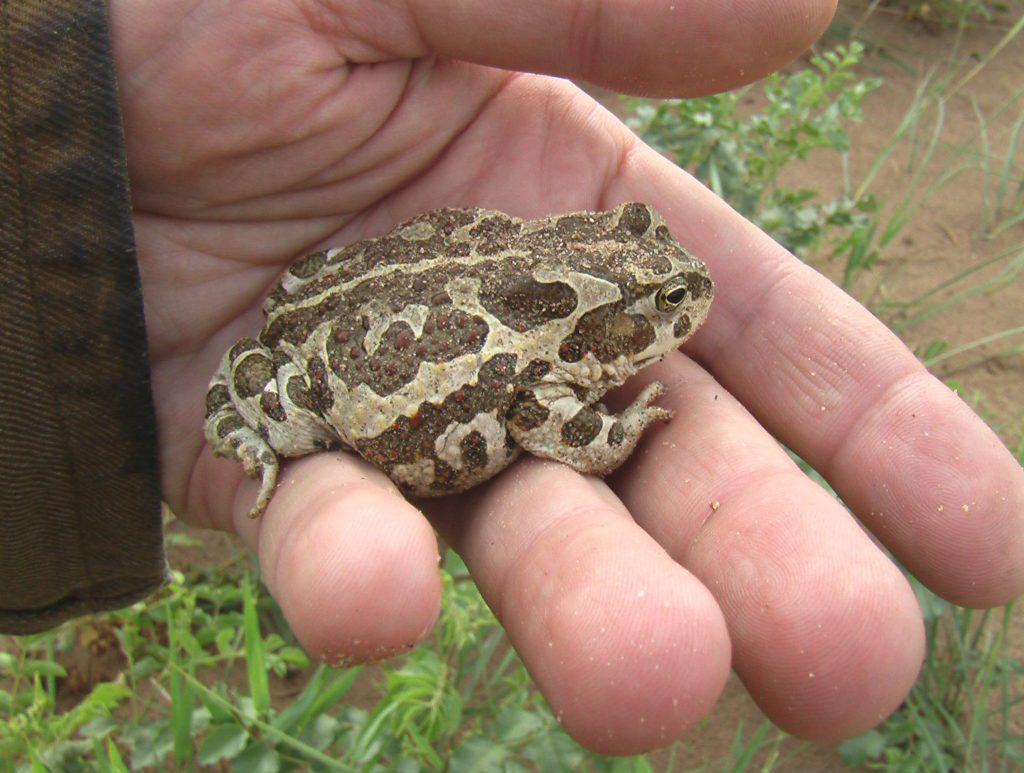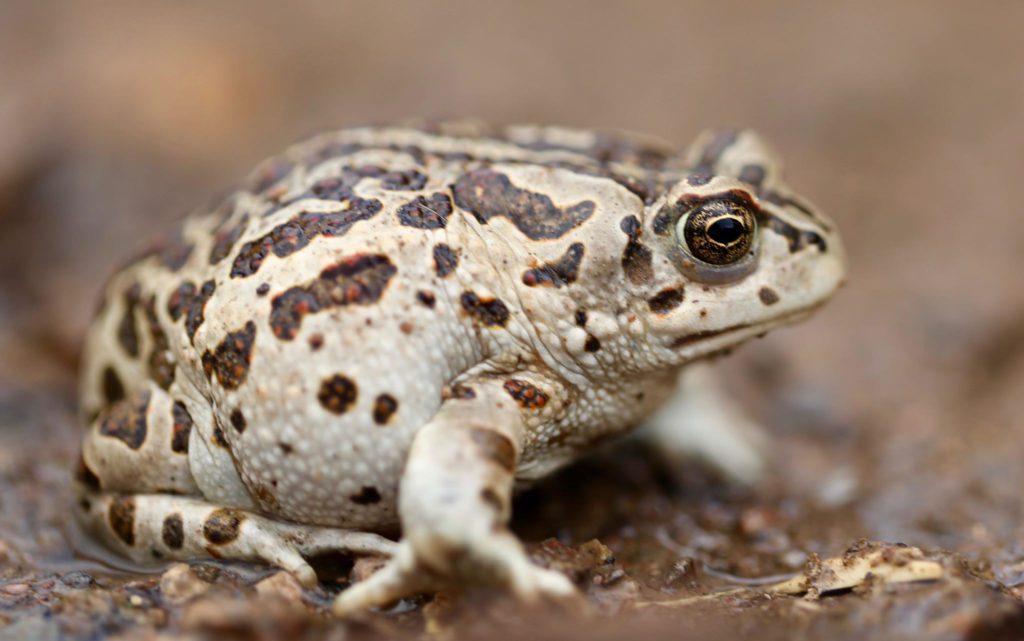Mongolian Toad
We’re going back to the Eurasian Steppe this week to take a look at the Mongolian toad. How do these toads survive where no other amphibian dares to travel? What the heck is a drink patch? The answer is more complex than you might think.
Main Notes and Takeaways
- Similar to the near-ubiquitous Green Toad in Asia, this toad lives in the steppe-plains of Mongolia.
- It lives under harsh conditions: arid grassland, neighboring desert, temperature extremes, little water availability.
- The Mongolian Toad is one of 5 amphibian species in Northeast Asia known to tolerate seawater.
- Mongolian toads can survive being frozen with the help of glycogen as a cryoprotectant, but will eventually die after several days. (More details below.)
- Siberian Salamanders in the same environments can survive far lower temps and longer periods of freezing, but aridity is still their worst enemy; they are more likely to desiccate than be injured while frozen.
- Water–or a lack of water–drives the Mongolian toad’s activities during the year, behaviors, and many of its physiological adaptation. (More below)

Our Favorite Notes from This Episode
Saltwater Tolerance
So we know the toad can tolerate salty environments. Why and how? Unfortunately it hasn’t been tested or measured in these animals yet, but the toad has been observed in beaches and the ocean, which is pretty significant for a permeable little amphibian.
In the Gobi Region, saline pools and other brackish environments are pretty common though, and we know that the Mongolian toad ventures out into the desert with relative frequency and comfort. Other Mongolian steppe wildlife also demonstrate saltwater tolerances, like our favorite Bactrian Camels that can actually drink saltwater, so it makes sense that these arid toads would find a way to utilize or survive salty places too. Pretty neat!
We do know that toads can change the way water moves through its skin through hormones like vasotocin, oxytocin, and prolactin, so maybe saltwater tolerance uses these channels of absorption to keep saline out.
Toads on Ice
Steppe amphibians can tolerate extremely low temperatures, and even survive freezing. The Mongolian toad is no exception.
They produce sugars that draw water out of their cells so that freezing occurs outside of cells rather than within. Glycogen is basically a cryoprotectant. Mongolian Toads will eventually freeze and die after several days, but concentrations of glycogen in the syntopic Siberian Salamander are insane. They can survive most of the liquid in their bodies freezing down to about -55C (-67F), far lower than any other vertebrate.
While the Siberian Salamanders are frozen, a common fatality is sublimation, not tissue damage. Water in their tissue turns from a solid directly to a gas, which causes the salamanders to desiccate. Aridity is still their worst enemy, even when frozen under snow.

Arid Adaptations
The main way these guys survive the heat, besides locking down the way their skin absorbs water, is through behavioral thermoregulation. Basically, they are active during the day when it’s cold, but active at night when it’s hot.
When the breeding season starts in spring, these guys are up at dawn calling. Around June, they start to sleep in more, and you see activity shifting later in the day. By August, Mongolian toads have switched to a fully nocturnal lifestyle, choosing to be active from dusk until the middle of the night instead.
When it rains, activity skyrockets and they appear in droves. These guys tend to move the most during rain too; they’ll suddenly appear in large numbers in dry areas under the cover of a nice rainfall.
They also save themselves from drying out by having a “seat patch” or “drink patch” on their butts. The portion of their body that sits on the ground is the absorbent patch of skin. Avoid getting baked by the sun: drink through your butt.
Sources/Further Reading:
- AmphibiaWeb 2017 Strauchbufo raddei: Mongolian Toad https://amphibiaweb.org/species/265 University of California, Berkeley, CA, USA. Accessed Apr 23, 2021.
- The Orianne Society: Enduring and Avoiding the Cold – How Reptiles and Amphibians Survive Northern Winters
- Berman, D. I., Bulakhova, N. A., Meshcheryakova, E. N., & Shekhovtsov, S. V. (2020). Overwintering and cold tolerance in the moor frog (Rana arvalis, Anura) across its range. Canadian Journal of Zoology. doi:10.1139/cjz-2019-0179
- Heo, K., Kim, Y. I., Bae, Y., Jang, Y., & Borzee, A. (2019). First Report of Dryophytes japonicus Tadpoles in Saline Environment. Russian Journal of Herpetology, 26(2), 87. https://doi.org/10.30906/1026-2296-2019-26-2-87-90
- Hopkins, G. R., & Brodie, E. D. (2015). Occurrence of Amphibians in Saline Habitats: A Review and Evolutionary Perspective. Herpetological Monographs, 29(1), 1–27. doi:10.1655/herpmonographs-d-14-00006
- Kuzmin, S. L., E. A. Dunayev, K. Munkhbayar, M. Munkhbaatar, and K. Terbish. 2017. Kuzmin, S. L. ed., The Amphibians of Mongolia [In Russian and English]. Moscow, KMK Scientific Press.
- This book is bilingual, so keep scrolling until you find the text written in English. Free PDFs available online. ISBN: 9785990894181
- Litvinchuk SN, Schepina NA, Borzée A. 2020. Reconstruction of past distribution for the Mongolian toad, Strauchbufo raddei (Anura: Bufonidae) using environmental modeling. PeerJ 8:e9216 https://doi.org/10.7717/peerj.9216
Toledo, R. C., & Jared, C. (1993). Cutaneous adaptations to water balance in amphibians. Comparative Biochemistry and Physiology Part A: Physiology, 105(4), 593–608. https://doi.org/10.1016/0300-9629(93)90259-7
Did you spot an error or have questions about this post? Email Rachel Roth.
